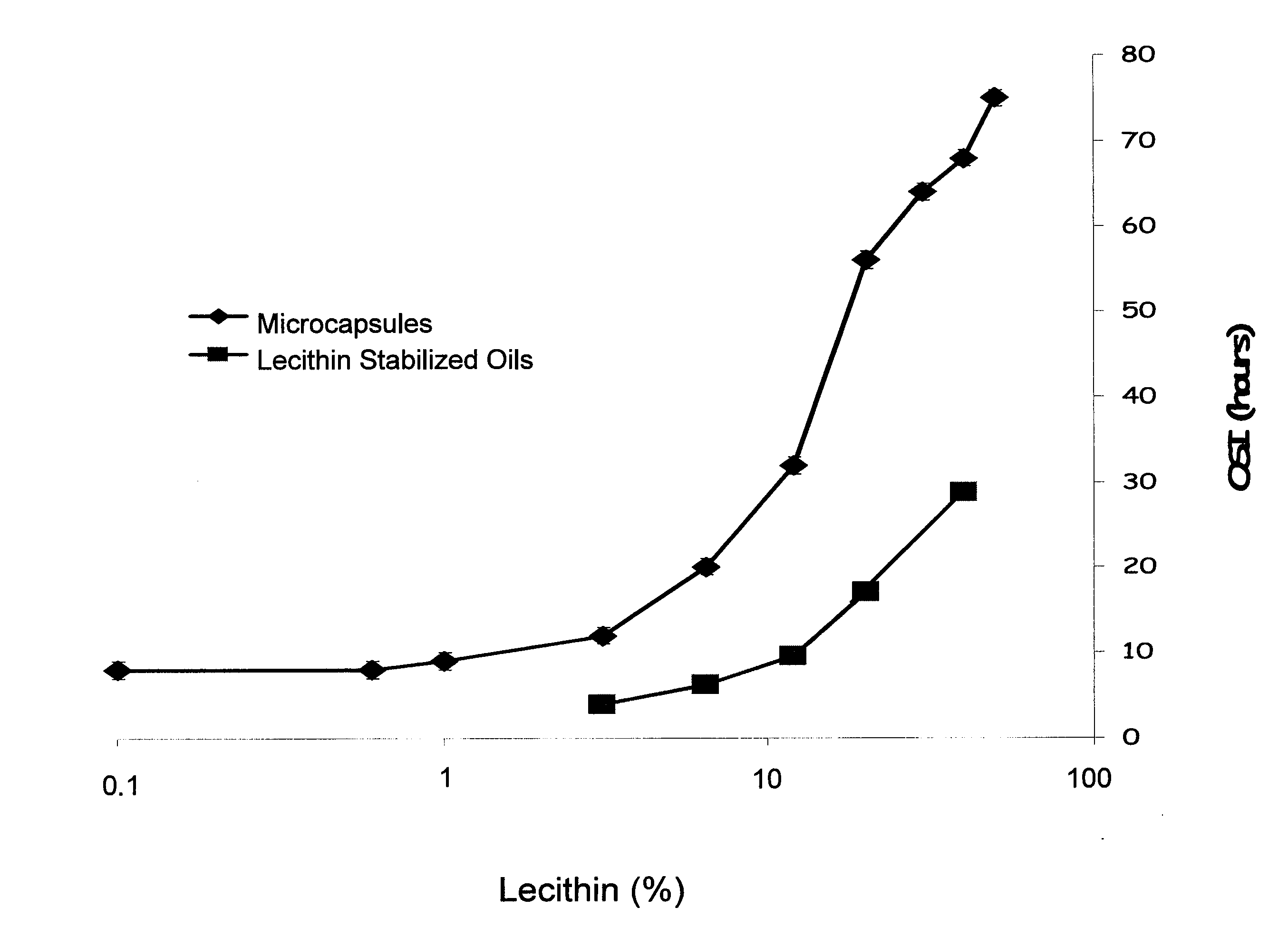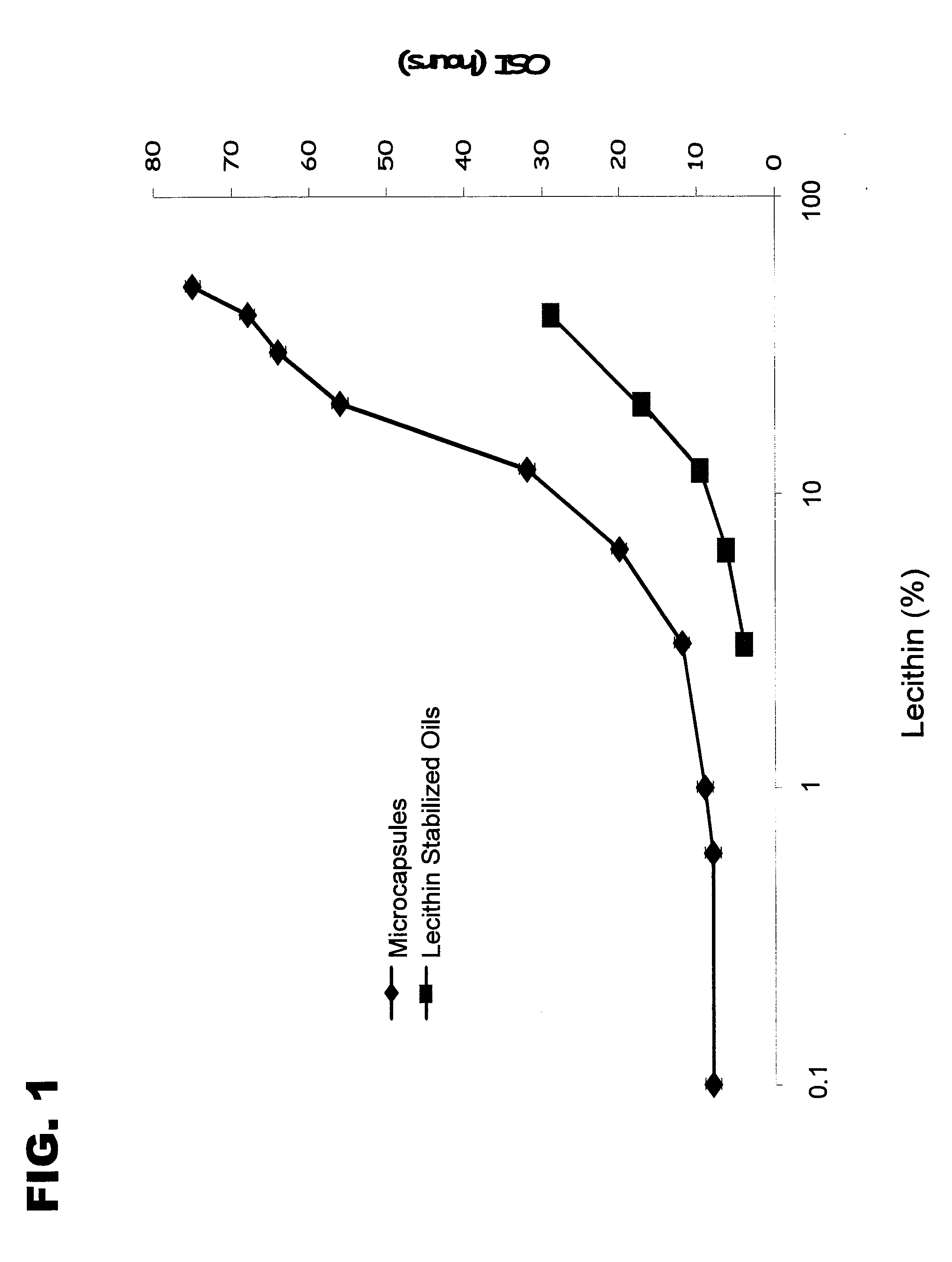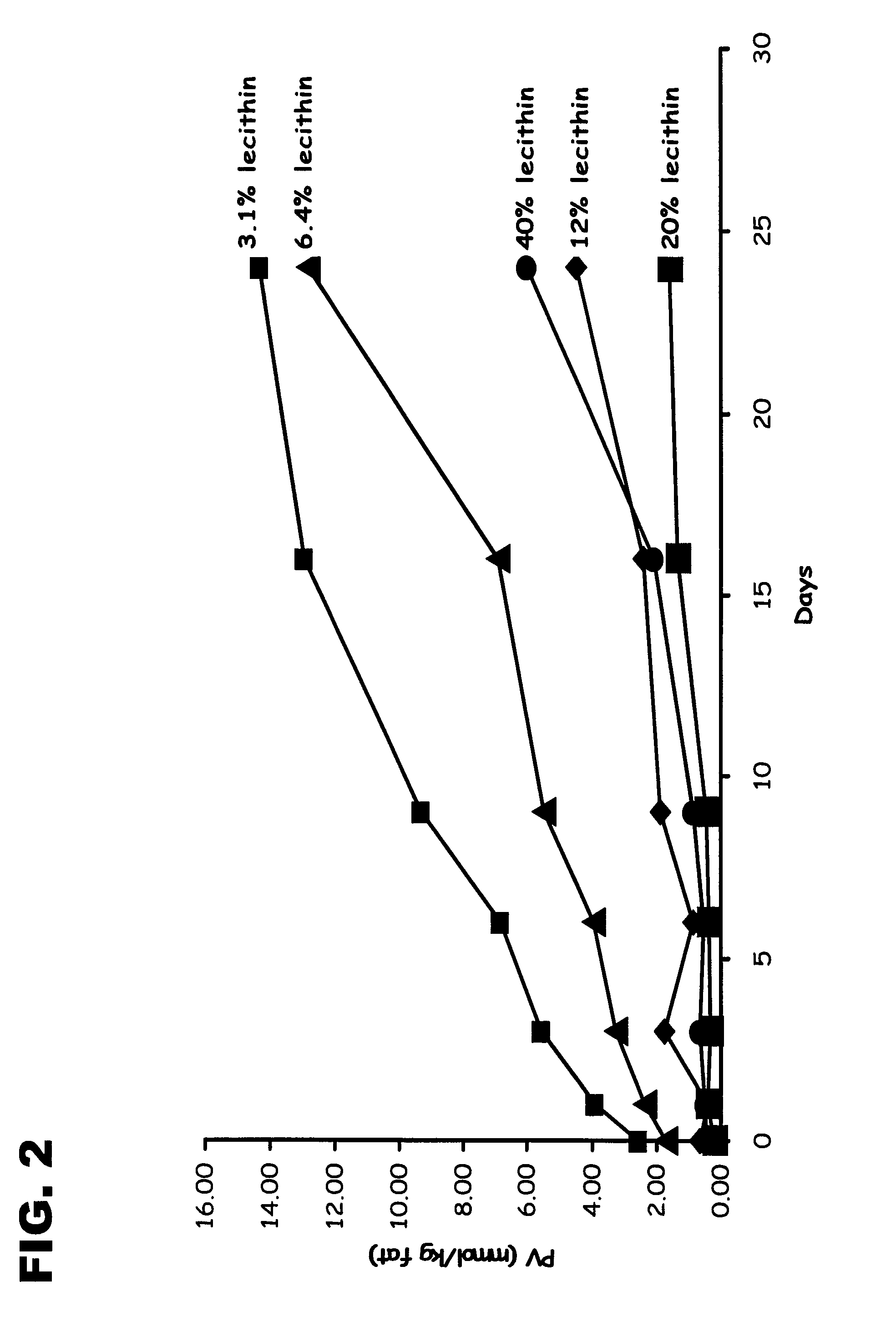Encapsulated Phospholipid-Stabilized Oxidizable Material
a phospholipid-stabilized, oxidizable material technology, applied in the field of encapsulated compositions, can solve the problems of low compliance, many individuals do not like the taste of seafood, cannot afford seafood, and cannot have easy access to seafood, so as to reduce the oxidation of an oxidizable material
- Summary
- Abstract
- Description
- Claims
- Application Information
AI Technical Summary
Benefits of technology
Problems solved by technology
Method used
Image
Examples
example 1
Stability of Lecithin-Stabilized Omega-3 Fish Oil Microcapsules
[0091] The ability of lecithin to prevent the oxidation of omega-3 fish oils was examined by preparing microcapsules comprising omega-3 fish oils and lecithin. For this, emulsions of fish oil prepared with increasing concentrations of lecithin were prepared, encapsulated, and spray dried. The percentage of lecithin to fish oil ranged from 0.1% to 50% (see Table 1).
[0092] Preparation of microcapsules. Solution A was prepared by heating 4781 parts of tap water to the boiling point and then cooling it to 70-80° C. To this was added 14 parts of sodium citrate and the amounts of lecithin listed in Table 1. Two different preparations of lecithin were used: Solec 8160, an enzyme modified lecithin preparation, and Solec F, a non-modified lecithin. The mixture was maintained at 70° C. and stirred until the powders had dissolved. Then 105 parts of Supro® EX 45 soy protein isolate was added and the mixture was heated to 70-75° C....
example 2
Stability of Encapsulated versus Non-encapsulated Lecithin-Stabilized Oils
[0096] The stability of encapsulated and non-encapsulated preparations of lecithin-stabilized oils was compared. Microcapsules comprising omega-3 fish oil and different percentages of lecithin ranging from 0.1% to 50% (by weight of the oil) were prepared and encapsulated as essentially described in Example 1. Lecithin-stabilized fish oils were prepared by dissolving the appropriate amount of lecithin (3% to 30%) in water (with or without an added protein), adding the appropriate volume of omega-3 fish oil, and homogenizing the mixture to create an emulsion. The water was removed from the emulsion by spray drying to form the lecithin-stabilized oils.
[0097] The oxidative stability of the lecithin-stabilized oils and the microcapsules were measured using the OSI method essentially as described in Example 1. As shown in FIG. 1, the microcapsules had higher OSI values, i.e., were more stable, than the lecithin-st...
example 3
Peroxide Values of Lecithin-Stabilized Oils
[0098] The oxidative stability of lecithin-stabilized fish oils was also analyzed by directly measuring the levels of peroxides in the preparations. The peroxide values (PV) are expressed as mmol / kg of oil. Lecithin-stabilized omega-3 fish oils comprising 3.1%, 6.4%, 12%, 20%, or 40% of lecithin (by weight of the oil) were prepared as described in Example 2 and were stored at 4°-5° C. Peroxide values were determined in the lecithin-stabilized oils on days 0, 3, 6, 9, 16, and 24.
[0099] As shown in FIG. 2, the best protection was provided by 20% lecithin, at every time point. Lower and higher percentages of lecithin provided less oxidative stability. The quadratic plot presented in FIG. 3 confirms that the optimal stabilization occurred at a lecithin concentration of about 25-30%, with lower and higher concentrations of lecithin providing less stabilization. Furthermore, this biphasic effect was more marked over time.
PUM
| Property | Measurement | Unit |
|---|---|---|
| diameter | aaaaa | aaaaa |
| diameter | aaaaa | aaaaa |
| diameter | aaaaa | aaaaa |
Abstract
Description
Claims
Application Information
 Login to View More
Login to View More - R&D
- Intellectual Property
- Life Sciences
- Materials
- Tech Scout
- Unparalleled Data Quality
- Higher Quality Content
- 60% Fewer Hallucinations
Browse by: Latest US Patents, China's latest patents, Technical Efficacy Thesaurus, Application Domain, Technology Topic, Popular Technical Reports.
© 2025 PatSnap. All rights reserved.Legal|Privacy policy|Modern Slavery Act Transparency Statement|Sitemap|About US| Contact US: help@patsnap.com



